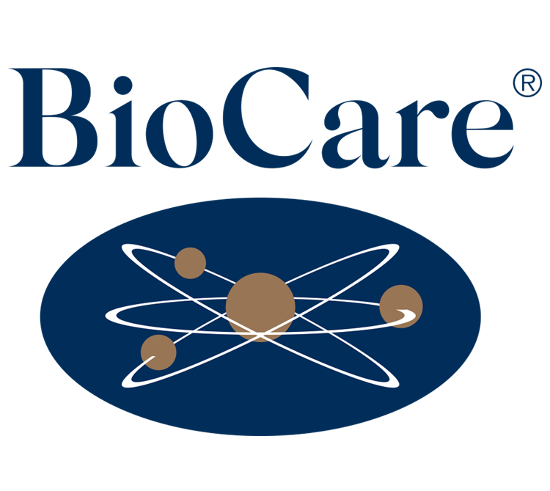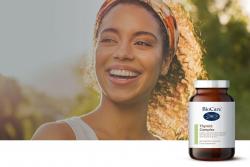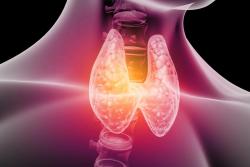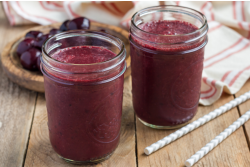Our bones hold us together, essentially the structural framework of the whole body. Bones are light, yet strong, mineralised tissues, forming part of a sophisticated system of levers, allowing us to move around with ease.
Bone consists of 70% minerals, such as calcium, and 30% collagen. The collagen and mineral components are responsible for the major functional characteristics of bone. Collagen is often overlooked as a vital organic aspect of bone, which gives it flexible strength, whereas the mineral components ensure bones are rigid, ensuring weight-bearing strength. It’s when there is a lack of collagen and essential minerals our bones can become overly flexible, and brittle.
So what causes this change and dysfunction of our bones?
The mineral content of our bones is measured as Bone Mineral Density (BMD). Lower levels leave the bone more vulnerable to fractures and bone conditions such as osteopenia, which can then develop to osteoporosis.1 The collagen content directly affects BMD, so when it is reduced, the mechanisms and structural strength of the bone are affected. The synthesis process of collagen can be impaired however, by exposure to toxins, through our environment, smoking, infection, poor diet, high levels of stress or lack of exercise.
The Calcium Conundrum:
We know calcium as one of the most important nutrients for healthy bones. However, balance is key as you can have too much as well as too little calcium. Our body works hard to regulate calcium for this reason. Levels that are too high can cause the body to then compensate by increasing the urinary output to bring the calcium levels back down. When calcium levels are too low, perhaps due to poor diet or taking calcium depleting medications, the body may leach calcium already present within the bones to help increase and maintain calcium levels.
Risk factors of lower bone mineral density include:
- Low vitamin D levels: Adequate vitamin D levels are vital for the normal metabolism and absorption of calcium from the gut, maintaining healthy levels in the bone. It’s also essential for the activity of osteoblasts, which are the cells within the bone involved in mineralisation.

- Vitamin K2 acts as a co-factor for the enzymes and amino acids involved in bone mineralisation.2 While vitamin D helps to support calcium absorption in the gut, vitamin K2 (ideally as the most bioavailable MK-7 form) helps to mineralise calcium in bone, working in synergy. Deficiency of vitamin K is associated with low bone protein levels, low vitamin D levels and decreased bones density.3 Interestingly, vitamin K levels can be affected by poor digestion, as our gut bacteria play an important role in vitamin K metabolism.4
- Poor quality diet: A typical Western diet, high in processed food, caffeine and sugar, poor quality meat, and low in vegetables or an excessively high amounts of protein, 5 can create an acidic environment, which can leach calcium from bones, affecting BMD.6 We refer to these dietary factors as types of ‘calcium wasting factors’.
- Lower levels of physical activity: Exercise is very important for healthy bones, as applying pressure to the bone through movement and exercise stimulates osteoblast activity – the cells that build bone. Therefore, low levels of exercise and leading a sedentary lifestyle are associated with lower BMD.7 On the other hand, too much exercise can also be a risk factor, such as long distance running8 or competitive cycling,9 so make sure you have a good balance.
- When you think about conditions such as osteoporosis, an overlooked risk factor is inflammation, with research showing that it may, in part, be an inflammatory condition.10 Inflammation has a negative impact on our bones e.g. autoimmune diseases can be a predictive factor for bone loss.11 A common cause of inflammation nowadays is chronically high cortisol levels (our stress hormone).
- Bones and our hormones are very much connected in the body. Hormones, in particular oestrogen and in part androgens such as testosterone, play a key role in growth and reproduction and are involved in bone formation and resorption.12 A clear example is during the menopause, when oestrogen levels typically fall, the levels of osteoblasts reduce, disrupting healthy bone formation and BMD.13
- Exposure to toxins can affect collagen and hormone levels. Examples include non-organic cosmetics/toiletries and exposure to pollutants from transport or cigarette smoke. Poor quality diet low in antioxidants such as vitamin C can further effect our body’s ability to protect collagen.14
So how can we support our bones?
It is important that we have sufficient intake of all the co-factors we need for healthy bones, such as the raw materials mentioned previously, including calcium, magnesium, boron, silicon (e.g. present in the herb, horsetail), vitamin K and D. The best place to start is with a healthy diet. Despite the widespread misconceptions, dairy products can be a good source of bone supporting nutrients. 15,16 However, it is important that it is good quality and organic, and not consumed in excess. If you’re avoiding dairy/lactose due to an allergy/intolerance or vegan diet, there are plenty of other good, if not better sources of calcium: sardines, sesame seeds, collard greens, spinach, kale, swiss chard, broccoli and tofu. Ensuring that you’re having enough protein in your diet is another essential factor for collagen especially. High quality meat, nuts, seeds, wholefood protein powders, pulses and vegetables are all excellent sources.
Reduce stress! Working on healthy work-life balance, taking up hobbies, yoga, meditation or deep breathing exercises can all be supportive. Making sure you are getting enough sleep can also reduce stress and help to balance our blood sugar levels, which has a direct impact on bone mineral density.17 Gentle regular exercise is also important for stress relief and for healthy bone density. Resistance exercise in particular is useful such as using ankle weights during the day for constant gentle exercise, or using a trampoline once a day are easy and excellent ways to put gentle pressure on your bones.

Healthy digestion, healthy bones! Including gut loving foods in your diet is really useful. Prebiotic foods e.g. leeks, onions and garlic or probiotic foods e.g sauerkraut and kefir, can help to keep your gut in check. Last but not least, organic bone broth is excellent for a source of proteins, collagen and minerals to support your bones.
Finally, supplementation can be a good way to ensure sufficient levels of bone and collagen supporting nutrients. We suggest the following top tips:
- When supplementing with calcium, remember to make sure you always provide necessary co-factors for its absorption and metabolism: vitamin K2, D3 and magnesium. Choose a well-absorbed calcium such as calcium citrate, which is gentle on the digestive system. As we mentioned, all minerals are equally important for bone health.
- In cases of collagen, look for the hydrolysed form in a supplement, particularly for inflammation, cartilage and overall joint health.18
- We mentioned earlier that gut bacteria play a key role in vitamin K absorption,19 therefore, taking a high quality probiotics supplement can be really supportive .20 Whilst also supporting the immune system in reducing inflammation.
Got a question?
The brand you can talk to:
We have a team of Nutritionists at the end of our advice line, open to you, for product support and advice (5 days a week). 0121 433 8702 or clinicalnutrition@biocare.co.uk
Or head to our advice page where you can find Healthnotes.
Not registered for an account with BioCare®?
You can register now to receive up to date news, product information and exclusive offers whether you are a consumer, practitioner or retailer.
_________________________________________________________________________________________________
1 McClung MR. The relationship between bone mineral density and fracture risk. Curr Osteoporos Rep. 2005;3(2):57-63
2 Urayama S, et al, Effect of vitamin K2 on osteoblast apoptosis: vitamin K2 inhibits apoptotic cell death of human osteoblasts induced by Fas, proteasome inhibitor, etoposide, and staurosporine. J. Lab. Clin. Med. 2000;136 (3): 181-193.
3 Sato Y et al. Vitamin K deficiency and osteopenia in disuse-affected limbs of vitamin D-deficient elderly stroke patients. Am J Phys Med Rehabil. 1999;78(4):317-22.
4 Conly JM, Stein K. The production of menaquinones (vitamin K2) by intestinal bacteria and their role in maintaining coagulation homeostasis. Prog Food Nutr Sci. 1992 Oct-Dec;16(4):307-43.
5 Weaver CM, Mobley SL. Calcium intake, body fat, and bones--a complex relation. Am J Clin Nutr. 2007;86(3):527
6 Maurer M et al. Neutralization of Western diet inhibits bone resorption independently of K intake and reduces cortisol secretion in humans. Am J of Ren Phys. 2003;284(1):F32-F40
7 Chastin SF et al. Associations between objectively-measured sedentary behaviour and physical activity with bone mineral density in adults and older adults, the NHANES study. Bone. 2014;64:254-62.
8 Bilanin JE, Blanchard MS, Russek-Cohen E. Lower vertebral bone density in male long distance runners. Med Sci Sports Exerc. 1989 ;21(1):66-70
9 Mathis SL et al. “The Relationship between Cortisol and Bone Mineral Density in Competitive Male Cyclists,” Journal of Sports Medicine. 2013;2013, Article ID 896821: 7 pages.
10 Ginaldi L, Di Benedetto MC, De Martinis M. Osteoporosis, inflammation and ageing. Immunity & ageing : I & A. 2005;2:14.
11 Amarasekara DA, Jiyeon U, Rho J. “Bone Loss Triggered by the Cytokine Network in Inflammatory Autoimmune Diseases”. Journal of Immunology Research. 2015;2015(Article ID 832127: 12 pages.
12 Clarke BL, Khosla S. Androgens and bone. Steroids. 2009;74:296–305
13 Hillard TC& Stevenson JC. Role of oestrogen in the development of osteoporosis. Calcified tissue international 1991; (suppl) 59: 55-
14 Mantle D, Wilkins RM, Preedy V. A novel therapeutic strategy for Ehlers-Danlos syndrome based on nutritional supplements. Med Hypotheses. 2005;64(2):279-83.
15 Shin S, Joung H. A dairy and fruit dietary pattern is associated with a reduced likelihood of osteoporosis in Korean postmenopausal women. Br J Nutr. 2013;110(10):1926-33.
16 Wadolowska L et al. Dairy products, dietary calcium and bone health: possibility of prevention of osteoporosis in women: the Polish experience. Nutrients. 201316;5(7):2684-707.
17 Muka T et al. The Association between Metabolic Syndrome, Bone Mineral Density, Hip Bone Geometry and Fracture Risk: The Rotterdam Study. Smith B, ed. PLoS ONE. 2015;10(6):e0129116.
18 PORFIRIO et al.Collagen supplementation as a complementary therapy for the prevention and treatment of osteoporosis and osteoarthritis:a systematic review.Rev. bras. geriatr. gerontol.[online]. 2016;19(1):153-164.
19 Conly JM, Stein K. The production of menaquinones (vitamin K2) by intestinal bacteria and their role in maintaining coagulation homeostasis. Prog Food Nutr Sci. 1992 Oct-Dec;16(4):307-43.
20 Scholz-Ahrens KE et al. Prebiotics, probiotics, and synbiotics affect mineral absorption, bone mineral content, and bone structure. J Nutr. 2007;137(3 Suppl2):838S-46S.





